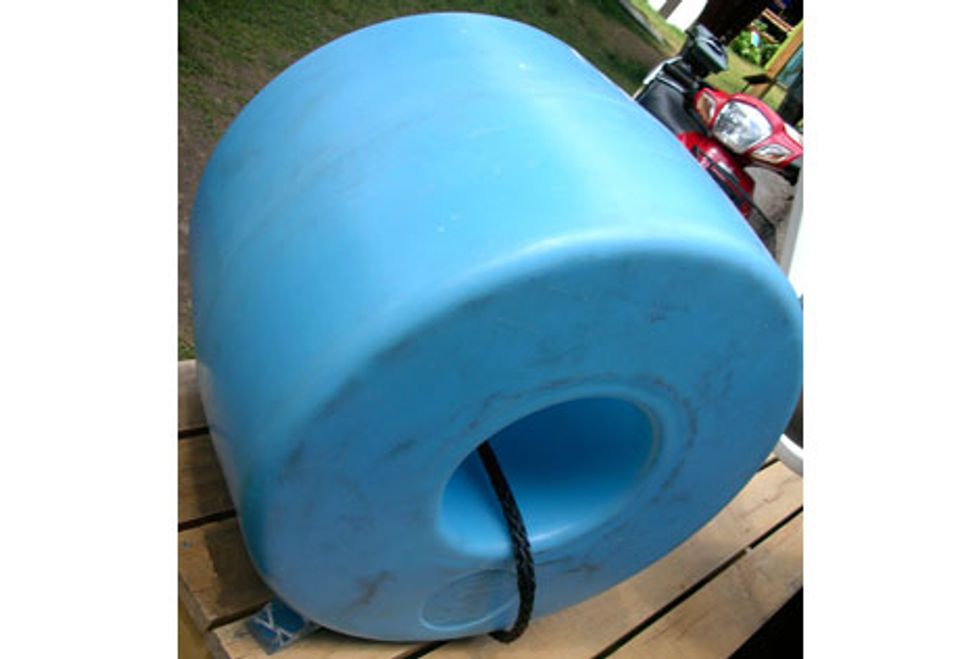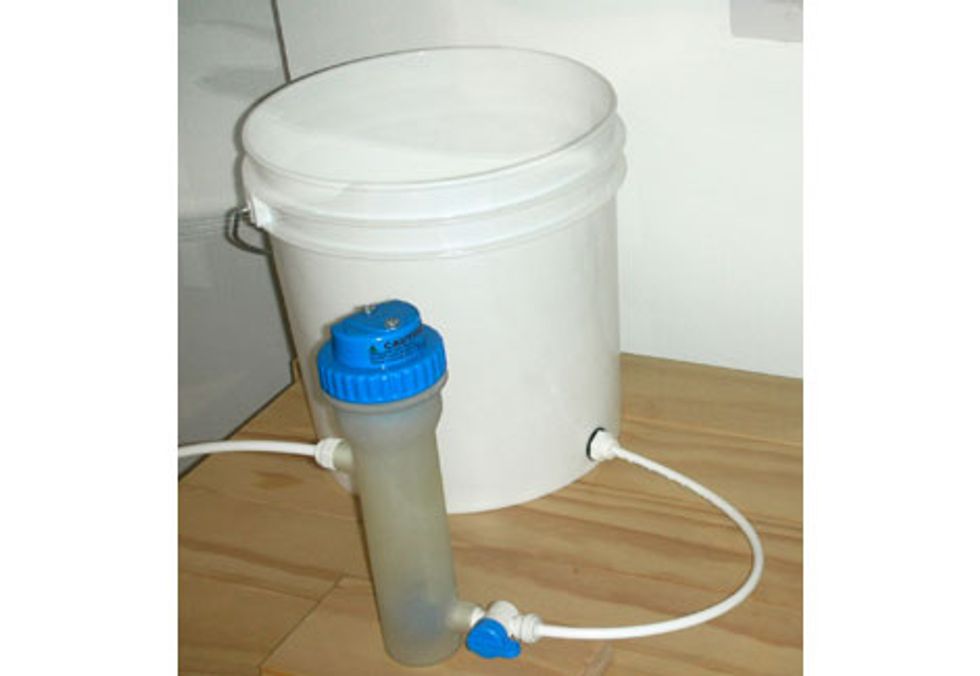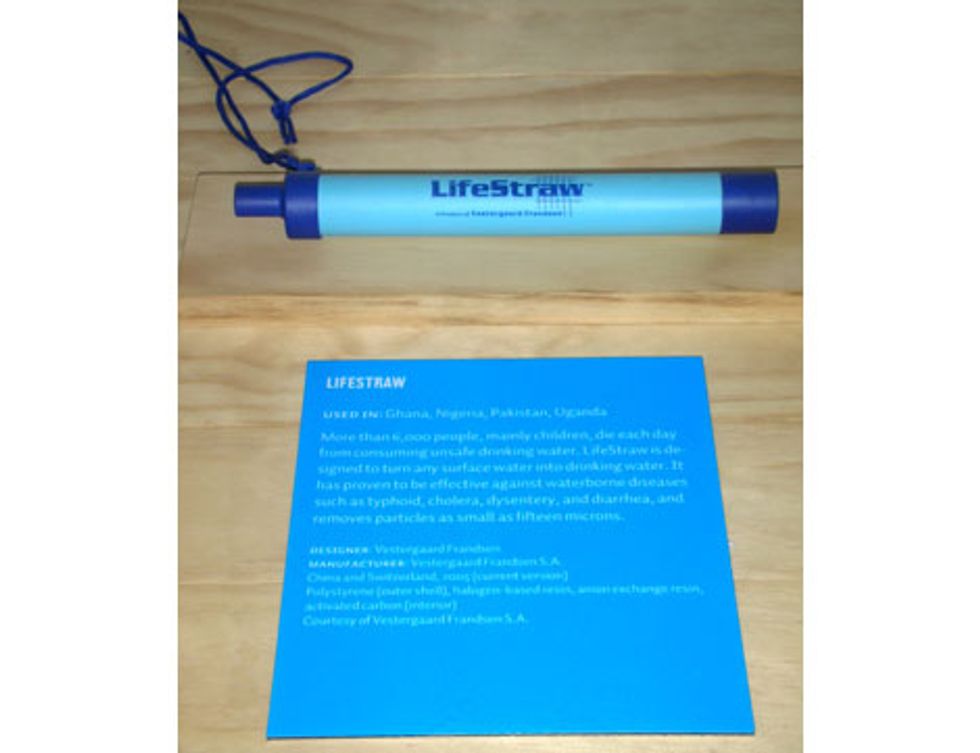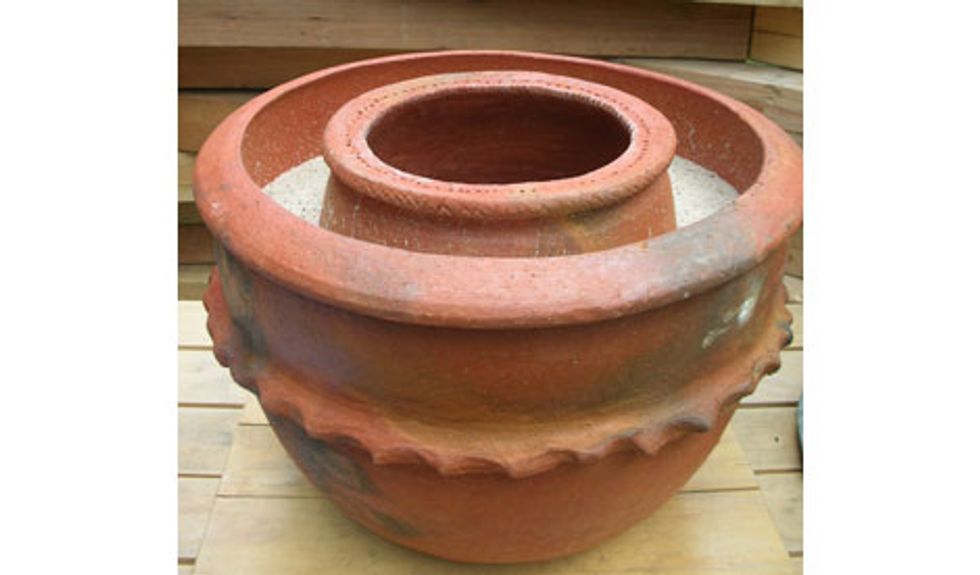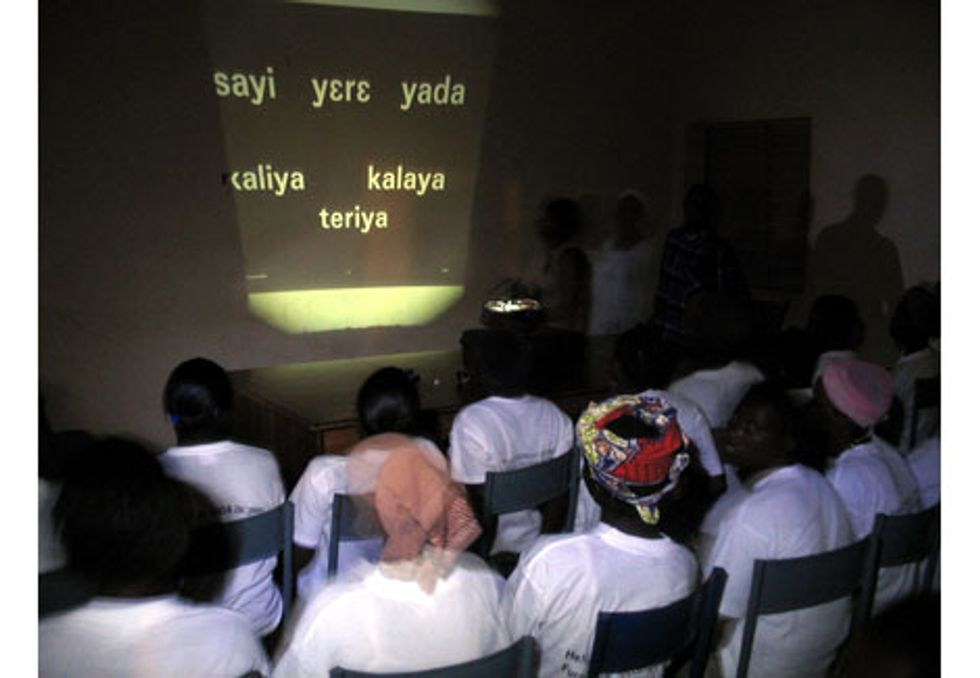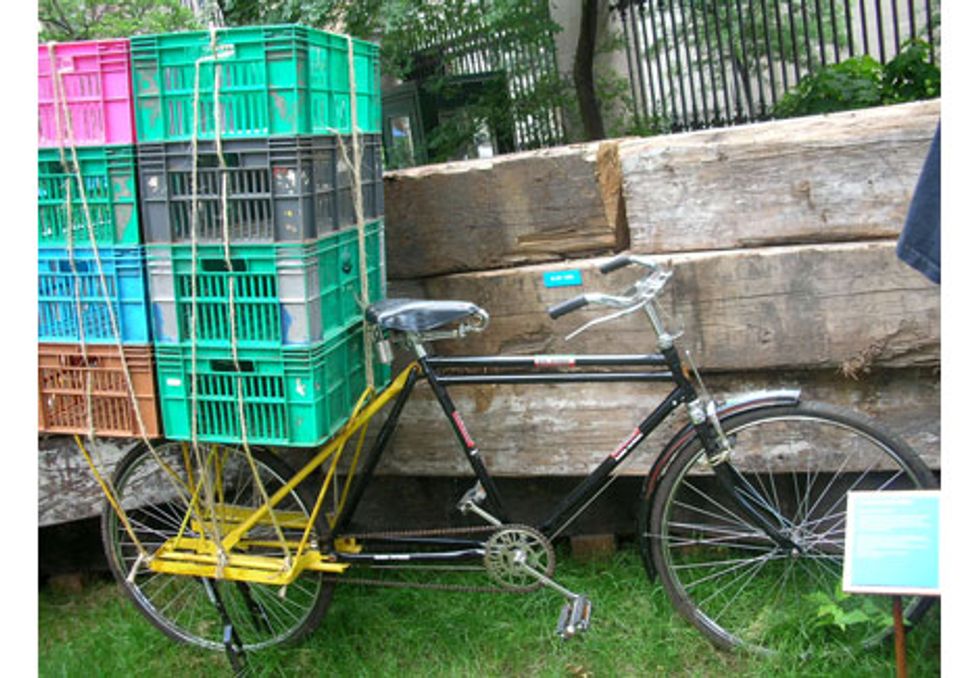The designs now on display at the Smithsonian's Cooper-Hewitt, National Design Museum, aren't as sleek as an iPhone. They're not as glossy as a pair of Nike Shox, nor are they as sexy as a souped-up Bugatti. ”The majority of the world's designers focus all their efforts on developing products and services exclusively for the richest 10 percent of the world's customers,” said entrepreneur and philanthropist Paul Polak, whose work inspired the exhibit. ”Nothing less than a revolution in design is needed to reach the other 90 percent.” But that 90 percent lives in parts of the world where poverty is inescapable and luxuries are uncommon. So how can design--often understood as superficial--save and transform lives?
”Design for the Other 90%,” on view until 23 September in the New York City museum's Arthur Ross Terrace and Garden, showcases design's potential to address the developing world's most pressing concerns. Chief among these are the need for safe and reliable energy, shelter, education, transportation, health, and water. Making cheap, clean water accessible to impoverished rural communities has been the main focus of Polak's work since 1981. Multiple water solutions are on display, and each one illustrates the sophisticated thinking that must go into filling a basic need. The answers to vexing, large-scale problems are packaged in the deceptively simple form of a plastic water jug, a bucket, and a straw. Some designs are more successful than others.
Hans and Pieter Hendrikse's Q-Drum , for instance, manufactured by Kaymac Rotomoulders and Pioneer Plastics in South Africa, is a torus-shaped blue plastic drum with a length of heavy-duty nylon twine looped through the hole. The designers envisioned the Q-Drum as an alternative to the jugs of water women carry on their heads, sometimes many kilometers each way, to get clean water. Its design lets people roll it over flat surfaces, rather than carrying a heavy container.
But while the Q-Drum's 5-millimeter-thick polyethylene walls make it very sturdy, it depends on flat, even terrain. ”It's not going to last,” says Basil Safi, program officer at the Bloomberg School of Public Health Center for Communication Programs at Johns Hopkins University, in Baltimore, who studies household water safety in developing countries. ”You have one rock or some uneven ground, and this thing is going to break, even with thick plastic.” Filled completely, the drum weighs 73 kilograms (160 pounds). ”You roll this thing around for a little while and that's great,” says Safi. ”All it takes is one hill, and that's around 160 pounds rolling at a fast pace toward the people behind you.”
Better than walking all day for clean water would be to have something to purify dirty--but locally available--water. The AquaStar Flow Through purifier, from Meridian Design, San Jose, Calif., provides an excellent, cheap alternative to lugging clean water from a distant source. Contaminated water is channeled through a tube that contains an ultraviolet-C lamp (the same kind found in tanning booths). The UV light neutralizes the pathogens in the water--bacteria, viruses, organic contaminants--and in minutes creates purified, drinkable water.
But there are limitations to the UV light's ability to sterilize. If the water is so dirty that it is opaque, the liquid immediately surrounding the light is sterilized, but where the particles block the light, the pathogens will survive. The water must be filtered through cheesecloth to remove the larger particles or stored in a bucket until the mud settles to the bottom. And finally, the tool must be kept safe, because if the 12-volt UV-C light breaks, there is no corner hardware store--or enough money--to obtain another one. Add to this the problem of finding a power source for the light in a rural village, and this seemingly simple solution becomes less so.
Simpler yet is Vestergaard-Frandsen's LifeStraw , which is a portable water filter. The LifeStraw is a fat plastic straw containing successive filters through which a person can suck water directly out of any available body of water--streams, ponds, or puddles. ”Ideally, you could use it to drink out of a latrine,” says Safi. The company, which is headquartered in Switzerland, has branches in eight countries, including Ghana, India, and Nigeria. It created the LifeStraw after noticing how many point-of-source solutions were failing. Water-purification technologies installed at the community spigots or in homes were known to eliminate pathogens, but somehow there were no noticeable drops in disease. Then Vestergaard-Frandsen's research confirmed that although many people have clean drinking water where they live, those who spend time away from home--like hunters or farmers--must settle for whatever's available, much of which is surface water so dirty it resembles chocolate milk.
Such standing water can host a parasite called Dracunculus medinensis , known commonly as the guinea worm or serpent worm. The parasite's eggs are ingested by water fleas, which enter the human stomach when a thirsty person drinks tainted surface water. The larvae drill into the stomach lining and grow to about a meter long during the ensuing year. When the mature worm, pregnant with millions of eggs, is ready to exit the body, the person develops an ulcer (usually on the skin of the lower extremities). As the worm starts to burrow out, it causes a burning sensation so intense that the host immediately seeks the nearest body of cool water. The moment the worm feels the water, it releases the eggs, thereby setting the stage to infest more victims. Though not fatal, guinea worm is an enormous financial drain. Infected individuals are incapacitated for weeks or months while the worm exits the body.
LifeStraw can filter out the larvae-laden fleas, and it can also protect the user from a host of other water-borne diseases. Vestergaard-Frandsen's U.S. regional director, Thomas Soerensen, says that the company aims to eradicate guinea worm by 2011. If it succeeds, guinea worm will be the second disease in history to be ended by human intervention (the first was smallpox). That project requires not just engineering but a complex web of cultural understanding, sociology, and cultural analysis. The company works with educators to teach people how to use its products.
Many of the exhibit's other designs similarly integrate engineering and cultural problem solving. The Pot-in-Pot cooler--used in Burkina Faso, Cameroon, Chad, Eritrea, Ethiopia, and Niger--keeps food from spoiling. The simple system consists of two clay pots, sand, and water. A smaller clay pot is nested inside a larger pot, and the space between them is packed with sand. Produce is placed inside the smaller pot, and water is poured into the packed sand. The evaporating water pulls heat out of the interior of the small pot, keeping the food cool and prolonging its storage capacity. Tomatoes, for instance, can last up to three weeks using the Pot-in-Pot, compared with two or three days without it. Not having to throw precious food away generates more income for farmers, especially those who have no access to a refrigerator. Better yet, the pots can be made locally, eliminating the need for costly shipping and adding jobs to the community.
The Kinkajou Microfilm Projector and Portable Library , made by nonprofit Design That Matters, based in Cambridge, Mass., is an inexpensive LED microfilm projector that allows students to learn at night even in rural environments that do not have electricity. Inspired by Fisher-Price toys that used plastic lenses for projection, the Kinkajou, which is named after a nocturnal rainforest mammal with large eyes, uses a combination of seven plastic lenses along with an energy-saving LED for its light source. The projector can cast a microfilm image 6 feet across, bright enough to be seen from the back of a large classroom. The Kinkajou's aim is to bring literacy to places such as Mali, where rural villages often lack electricity, and education can be conducted only at night, when adults are not working. Rather than students in a crowded room passing around dim lanterns and tattered books, they look at materials projected onto the wall by the Kinkajou. ”It's got to be low cost, it has to last a long time, it has to be portable,” says Timothy Prestero, cofounder of Design That Matters. Working with MIT design students, the company resurrected microfilm technology from its Cold War grave. ”Microfilm's rated to last something like 120 years in this incredible temperature range, and we can put 10 000 images or 10 000 pages of information on a cassette that costs $4.” The projector's efficient LEDs come with a solar panel for off-grid use.
The Big Boda load-carrying bicycle, designed by WorldBike, of Berkeley, Calif., takes on the challenges of living in a country where not everyone has a pickup truck, by fortifying the common bicycle to carry many kilograms of extra cargo. Having a personal transportation mechanism to haul cargo and goods is one inexpensive part of solving a complicated problem.
In design and engineering, the best solutions tend to be the simplest. Because the idea of simplicity is so culturally dependent, poverty and disease solutions in the developing world demand more than technical sophistication. This exhibit reminds its audience why real simplicity is the most elusive goal.
